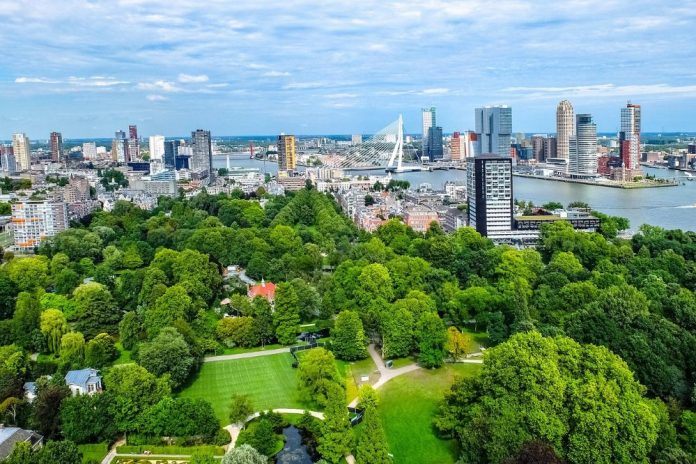Efforts to decarbonise buildings are accelerating but authors of a report are warning COP delegates that further action is needed.
Global built environment consultancy Arup and the World Business Council for Sustainable Development (WBCSD) have launched Driving the Ambition Loop, a report that takes stock on the Market Transformation Action Agenda (MTAA), which connects and coordinates industry leaders tackling the most critical barriers to decarbonising the built environment.
The report highlights where business and policymakers are making progress on key interventions to cut carbon in buildings, providing a playbook ahead of COP30 in Brazil to inform policy with proven leadership and encourage international coordination.
The built environment sector is responsible for 34% of global emissions – more than the entire transportation sector – making the transition to lower-carbon buildings a crucial response to climate change. The report’s authors are calling for businesses and policymakers to harmonise carbon measurement standards internationally, embed carbon costs into financial decision-making and coordinate procurement and investment to accelerate the transition to lower carbon buildings.
They warn that without more action the sector will not cut enough carbon to meet the Paris Agreement’s 1.5°C target. The report highlights how the key to success is the ‘ambition loop’, a positive feedback cycle where bold business action gives policymakers the confidence to raise standards and clear policy signals in turn unlock greater private investment and innovation. It shows examples of this reinforcing cycle, noting that momentum is strongest where visible corporate leadership meets early policy signals.
It highlights the progress that needs to happen across the MTAA’s three key levers:
- Align behind Whole‑Life Carbon (WLC): Progress on national and regional standards for data collection is laying the groundwork for policy. But fragmentation remains a barrier – particularly across borders.
- Integrating carbon cost and price: Internal carbon pricing and emissions trading are gaining traction but need broader adoption.
- Transform supply and demand: Procurement policies and corporate commitments are growing, yet require greater international coordination to unlock investment at scale.
To scale up solutions enough to keep global temperature rises below 1.5°C, the report sets out practical next steps for the MTAA. This includes deeper alignment with the Buildings Breakthrough – the intergovernmental initiative now across 29 countries aiming to make near‑zero‑emissions, resilient buildings the new normal by 2030. The work builds on Arup and the WBCSD’s call for ‘carbon transparency’ and Arup’s development of its own dataset analysing building projects with WLC techniques.
Will Wild, building decarbonisation expert at Arup, said: “Decarbonising the world’s buildings is a huge challenge, but progress accelerates when industry leadership and policy ambition reinforce one another, creating ambition loops. This report spotlights examples of industry action – developing new data formats to enable international sharing, guiding global investment and integrating carbon accounting into industry practice. As we look ahead to COP30, these solutions provide the confidence policymakers need to drive market transformation.”
Roland Hunziker, director of built environment at the WBCSD, said: “This progress report attests to the power of collaboration in tackling critical interventions to shift the entire system towards net zero. It maps and signposts key initiatives that are delivering the transformation and it highlights gaps as well as strategic opportunities for increasing our joint efforts towards the goal of halving the emissions from the built environment by 2030. Most importantly, the report underlines that the business case for action to decarbonise buildings is clear and it can be universally supported by ambitious and performance-based regulation to accelerate the change.”
Gulnara Roll, head of cities at the UN Environment Programme, said: “As ministers to the Intergovernmental Council for Buildings and Climate prepare to meet at COP 30, this timely report sends a clear signal of industry confidence. By spotlighting how industry leaders are addressing some of the most critical barriers to market transformation, it shows that change is not only possible – but that where policy and industry leadership reinforce one another in ‘ambition loops’, transformation can scale rapidly.”
Click here to download the Driving the Ambition Loop report.




